by Raul Elias C. Lopez, Regional Technical Service Manager, Broiler Specialist, Cobb Asia. www.cobb-vantress.com
The poultry breeding business has evolved through the years but the purpose of a good broiler genetic company is to serve customers through the use of innovative research and technology to make protein healthy and affordable to everyone.
In the 1950s the breeders just selected for body weight. As they transitioned into the 1960s they realised that they needed to also select for better legs and reproductive performance to keep the birds ‘balanced’. In the 1970s we began selecting for feed conversion and began using genetic statistics to predict performance of the next generation using the performance of relatives.
They also began selecting for yield in the 1980s. The 1990s began adding new technologies to evaluate the health of the birds that were previously only used in human medicine, such as the x-ray, ultrasound, and the pulse-oximiter.
The first genetic map came out and we began using markers for simple traits like feather colour.
Today we select on over 60 different traits and are using new biotechnologies such as genomics in an attempt to better predict which animals have the right genetics for the next generation. The future of genetic selection will be geared towards the same goal of providing healthy affordable protein but also will include considerations for animal welfare and the environmental impact of large scale poultry production.
As a genetic company providing about half of the world with its requirements to produce broilers, Cobb focuses on broiler genetics with the best efficiency to convert feed into weight but more importantly the best efficiency in producing quality meat that is healthy for humans to consume. It has always been the thrust of Cobb to produce broiler genetics where performances are balanced in terms of breeder production and broiler production. It is the production of healthy meat, animal welfare conforming, usable eggs and broiler efficiency that is important for Cobb. But with fast growth rates comes higher metabolic heat production which will require changing of the broiler environment as well as in the hatchery.
Broiler efficiency can be measured by production performance such as feed conversion, average daily gain, average bodyweight, depletion and days to harvest. Furthermore, these performance influences also cost to produce, cycles per year, tonnage harvest per year.
| Old BW | New BW | Old ADG | New ADG | Old FCR | New FCR | |
| 14 | 465 | 528 | 33.2 | 38.5 | 1.165 | 1.03 |
| 21 | 943 | 1018 | 44.9 | 49.1 | 1.264 | 1.22 |
| 28 | 1524 | 1615 | 54.4 | 58.2 | 1.402 | 1.37 |
| 35 | 2191 | 2273 | 62.6 | 65.3 | 1.530 | 1.50 |
| 42 | 2857 | 2952 | 68.0 | 70.5 | 1.675 | 1.61 |
| 49 | 3506 | 3617 | 71.6 | 73.9 | 1.819 | 1.76 |
| 56 | 4111 | 4227 | 73.4 | 75.5 | 1.963 | 1.91 |
| 63 | 4649 | 4759 | 73.8 | 75.5 | 2.105 | 2.04 |
Table 1. Comparison between 2015 and 2018 Cobb broiler performance guide.
The right environment
To maximise profits in broiler production, it is important to raise the broilers in conditions where they are comfortable and the conditions are right for efficient growing. Preheating the houses to the temperature where the broilers are going to be active to eat and drink and have activity is key to the broiler’s start as this determines early feeding and early development of the gastrointestinal tract.
Late development or the delayed development of the GIT results in slower growth and increased culling rates. This results in delayed days to harvest weight as well poor uniformity of flocks. High feed consumption in the first seven days supports the growth of the GIT, and other internal organs and especially the immune system.
Ventilation of closed poultry houses plays a major role in broiler performance and efficiency as this system functions not only to provide the optimal temperature but also allows removal of body heat and provision of fresh air for the flocks. With ever improving broiler genetics, ventilation must be regularly adjusted according to the growth rate of the broilers raised.
Failure to adjust ventilation results in lower efficiency as birds may go off their thermoneutral zone for a few hours a day and this results in reduced efficiency.
If broilers grows faster than target, ventilation rates can be increased especially during the transition period from 10-21 days. But adjustments must be done in small amounts as over ventilation results in lower efficiency as gas use is more and can have a negative effect with birds wind chilled. The use of smaller sized fans provides opportunity to make small ventilation adjustments.
To be able to achieve superior broiler performance and efficiency, there are many management factors, such as nutrition, ventilation, temperature control, light control, feeding strategies, feeding programs, feed formats, and regulation of feeding space, watering space, and density.
A change to the male line
A major change in broiler efficiency happens when a change in genetics is introduced, for example a change in the male line. Characteristics such as FCR, body conformation are highly heritable from the males.
Recently in Asia a new male was introduced into the Cobb lines. This is the MV male. The current broilers being produced in some countries in Asia and soon all over Asia, are showing better feed conversion by at least two points at lighter bodyweight targets and increases as bodyweights increase when compared to the previous genetic mix. Livability has also improved especially after 21 days. This change is created with a change in the breeders. The breeders (male line) are also very efficient in converting feed and, as such, results in lower feed intake when grown on the same weight standards.
When compared to Cobb MX broilers, Cobb MV broilers are much more efficient, while the breeding performance remains superior with high fertility and hatchability as the MX breeders. Cobb’s broiler test farms in Europe, USA and South America, demonstrated that there is significant improvement in body weights, average daily gain and feed conversion in this new broiler. The implications of this change is that there will be a significant improvement in broiler performance particularly in feed conversion and mortality.
But in order to benefit more, there is a need to adjust ventilation by giving more air speed to remove body heat in this fast converting and growing broiler. Because of the higher feed conversion capability in the first week, focus on brooding needs, especially in the first two days, will become more important.
Closed house systems using tunnel ventilation and transitional ventilation would be best to grow these broilers.

